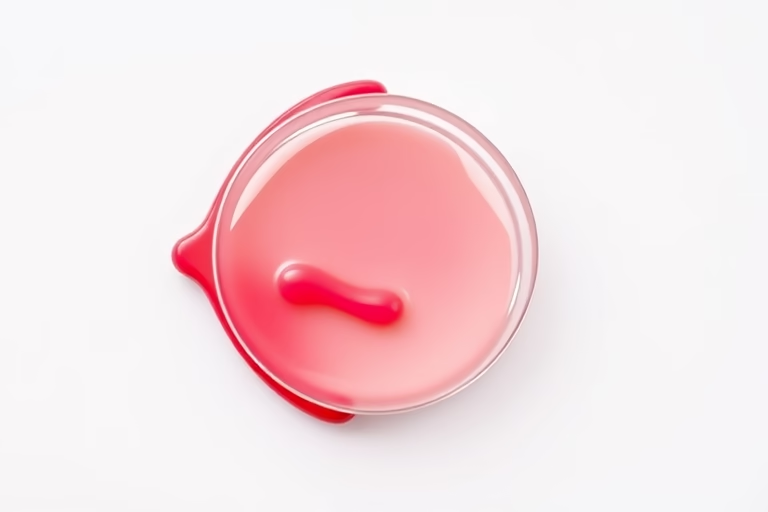Understanding Ovulation Bleeding vs Implantation Bleeding
In this discussion, we will be talking about the differences and similarities between ovulation bleeding and implantation bleeding. Both phenomena are key indicators of a woman’s reproductive cycle and can often confuse individuals trying to understand their menstrual health. Ovulation bleeding typically occurs around the midpoint of your menstrual cycle, often marking the release of an egg from the ovary. Implantation bleeding, on the other hand, happens when a fertilized egg attaches itself to the uterine lining, usually a few days to a week after conception. These occurrences can be subtle and may go unnoticed, but understanding what they are and how to differentiate between them is crucial for those trying to conceive or monitoring their menstrual cycle.
Ovulation bleeding is light spotting that occurs during ovulation, which is when an egg is released from the ovary. It is often characterized by a pink or brownish discharge. This bleeding can last from a few hours to a couple of days and is usually quite light. In contrast, implantation bleeding may present itself as slight spotting that occurs around 6 to 12 days after conception, lasting a few hours to a few days. The color can vary, but it is often lighter than a typical menstrual period and may be less consistent. Understanding these distinctions is vital for individuals who are either trying to conceive or who want to maintain awareness of their reproductive health.
1. What Causes Ovulation Bleeding?
Ovulation bleeding occurs due to the hormonal changes associated with the menstrual cycle. At ovulation, a surge of estrogen causes the uterine lining to thicken, preparing the body for a potential pregnancy. When the egg is released, the increase in estrogen can lead to the breakdown of blood vessels, resulting in light spotting. This bleeding is normal and should not be a cause for concern unless it is accompanied by severe pain or unusual symptoms.
The amount of bleeding varies among individuals, and while some may experience noticeable spotting, others may not have any bleeding at all. Factors influencing ovulation bleeding can include stress, hormonal imbalances, or changes in birth control methods. Staying aware of your body’s signals during ovulation can help you recognize this occurrence and better understand your cycle.
2. The Characteristics of Implantation Bleeding
Implantation bleeding typically occurs when the fertilized egg embeds itself into the uterine lining, resulting in minor bleeding. This generally takes place about a week after fertilization, which is often slightly before your expected period. Unlike ovulation bleeding, implantation bleeding is usually very light and can appear pink or brownish, often described as a “spotting” rather than a flow.
Duration is another element that differentiates implantation bleeding from ovulation bleeding. Implantation bleeding may last for a few hours to a couple of days, whereas ovulation bleeding can last up to two days. Patients often report no discomfort or only mild cramps during implantation bleeding, which can differ from the symptoms associated with a standard menstrual period.
3. Timing Differences
Timing plays a significant role in distinguishing between ovulation bleeding and implantation bleeding. Ovulation typically occurs about halfway through the menstrual cycle, which is generally around day 14 of a 28-day cycle. Therefore, ovulation bleeding would be expected at that time, about two weeks before your period. In contrast, implantation bleeding occurs approximately one week after ovulation if fertilization happens.
This timing is essential for those tracking their ovulation and menstrual health. If you are trying to conceive, understanding the timing of ovulation can assist in optimizing your chances. In contrast, recognizing the signs of implantation bleeding helps to identify early pregnancy. As such, tracking changes in your cycle can provide valuable insights.
4. Color and Texture Comparison
The color and texture of spotting can also serve as distinguishing features between ovulation bleeding and implantation bleeding. Ovulation bleeding is typically light pink or brown and may appear thicker due to the presence of cervical mucus. In contrast, implantation bleeding is often lighter and may be more watery in consistency. Some women describe implantation bleeding as almost a rust color.
It is essential to keep an eye on these details, as they can provide significant clues about your health and reproductive state. While both types of bleeding may warrant attention, understanding their characteristics will put you in a better position to monitor your cycle effectively.
5. Associated Symptoms
Recognizing additional symptoms can further help in differentiating between ovulation bleeding and implantation bleeding. Ovulation is often accompanied by other signs such as increased libido, breast tenderness, and mild cramping. These are due to rising estrogen levels and can vary among individuals.
On the other hand, implantation bleeding may be accompanied by other early pregnancy symptoms, such as nausea, fatigue, frequent urination, and sensitivity to smells. These additional signs can aid in early detection if you suspect pregnancy. Monitoring these associated symptoms creates a broader picture of your reproductive health.
6. Ovulation and Its Role in Fertility
Understanding ovulation is crucial for those seeking to enhance their fertility. Ovulation represents the peak of your fertility, where an egg is released and can be fertilized. Recognizing signs of ovulation, such as changes in cervical mucus or mild cramping, can be pivotal when trying to conceive.
Keeping a record of your menstrual cycle can help determine your most fertile days. If you experience consistent ovulation bleeding, this may further confirm the regularity of your ovulation. Heightened awareness is essential for optimizing natural conception efforts.
7. When to Consult a Doctor
While both ovulation bleeding and implantation bleeding are generally normal, there are instances where medical consultation is necessary. If bleeding is excessively heavy, lasts longer than a few days, or is accompanied by severe pain, it is crucial to seek medical attention. Experiencing these symptoms could indicate larger health issues that require immediate evaluation.
In addition, if you suspect pregnancy and experience heavy bleeding, this may need to be addressed, as it could be a sign of miscarriage or other complications. Health professionals can provide valuable support and the necessary interventions for any significant issues.
8. Lifestyle Factors Affecting Ovulation and Implantation
Various lifestyle factors can affect the occurrence of ovulation or implantation bleeding. Stress, diet, exercise, and hormonal imbalances can significantly impact your menstrual cycle. Ensuring balanced nutrition, targeting stress management techniques, and maintaining a healthy lifestyle are vital for reproductive health.
Consulting with a healthcare professional to discuss personal factors can lead to personalized recommendations that may improve your overall reproductive health. Staying informed about how lifestyle choices influence your cycle can enhance your awareness.
9. Debunking Myths
There are many myths surrounding ovulation bleeding and implantation bleeding. One common myth is that all women experience ovulation bleeding. In reality, many women do not notice any bleeding during ovulation despite regular cycles. Another myth is that all spotting signifies pregnancy, which may not always be the case. It’s essential to separate fact from fiction to understand your body better.
Education helps clear misconceptions that can lead to unnecessary anxiety. Engaging with reliable resources and professional advice is crucial to navigating through the information correctly.
Final Thoughts
Understanding the differences between ovulation bleeding and implantation bleeding is critical for anyone engaged in reproductive health monitoring. Recognizing the timing, symptoms, color, and texture of spotting can provide essential information that aids in identifying health status, especially for those looking to conceive or who have irregular menstrual cycles.
Maintaining awareness of your body is vital. Keeping track of your menstrual cycle, noting changes, and recognizing your unique patterns can empower you in managing your reproductive health. Always consult healthcare professionals when in doubt or if you experience any unusual symptoms. This partnership will help ensure your health remains a priority.
Frequently Asked Questions
Ovulation bleeding occurs during the ovulation phase, typically around the middle of the cycle, while implantation bleeding happens when a fertilized egg attaches to the uterine lining, usually a week after ovulation.
Ovulation bleeding usually lasts for a few hours to a couple of days.
Implantation bleeding may come with symptoms like mild cramping, fatigue, or nausea, which are common early signs of pregnancy.
No, not everyone experiences ovulation bleeding each cycle. It varies from person to person.
Consult a doctor if bleeding is heavy, lasts longer than a few days, or is accompanied by severe pain.
Further Reading
What Type of Psychotherapy Is Best for Anxiety?







